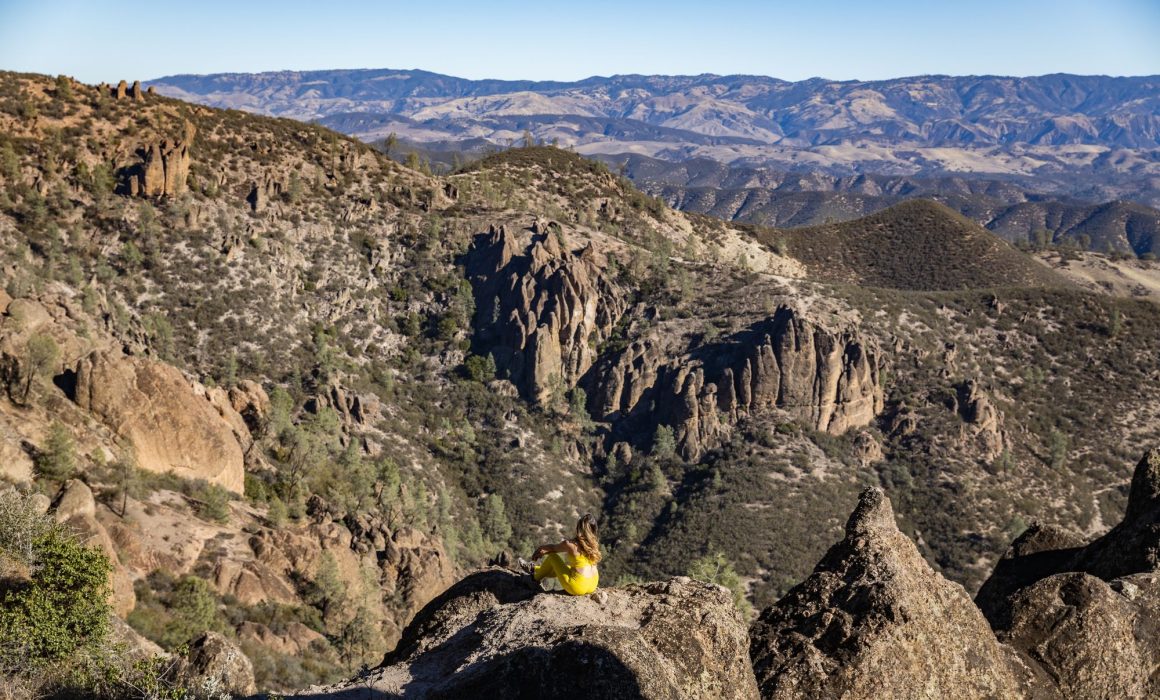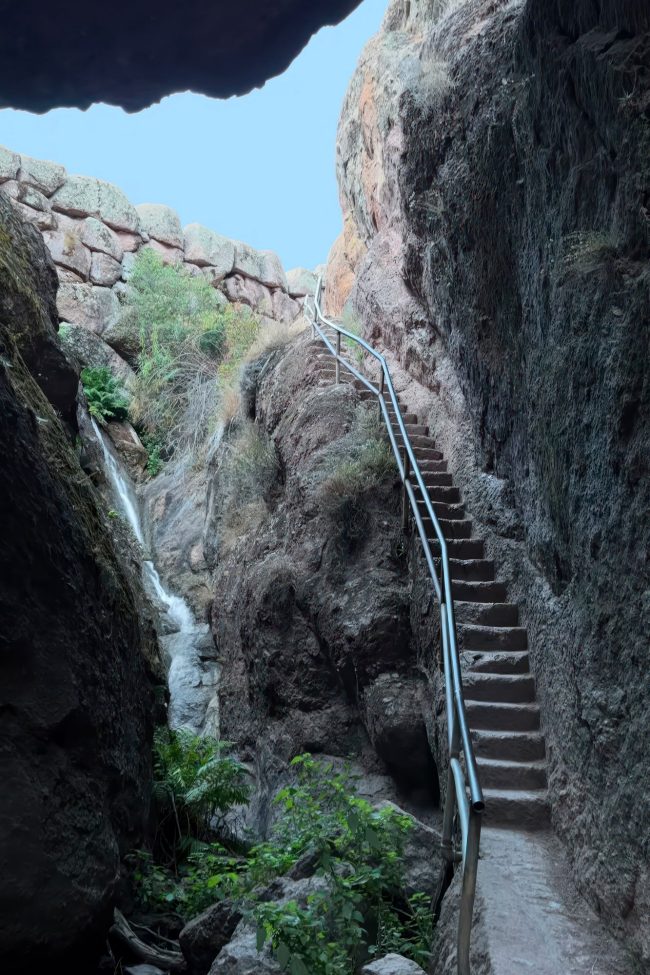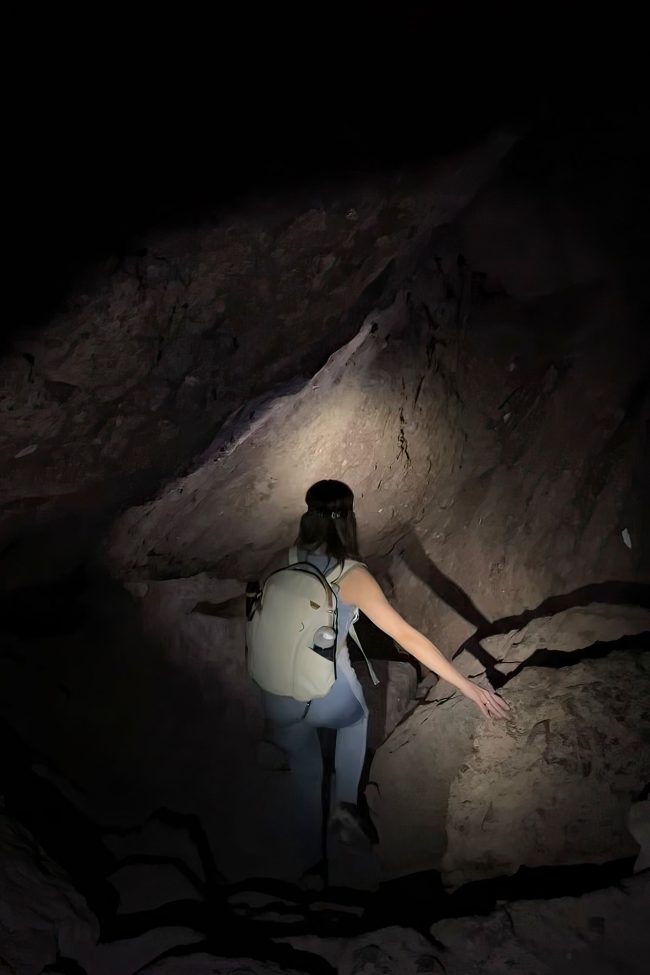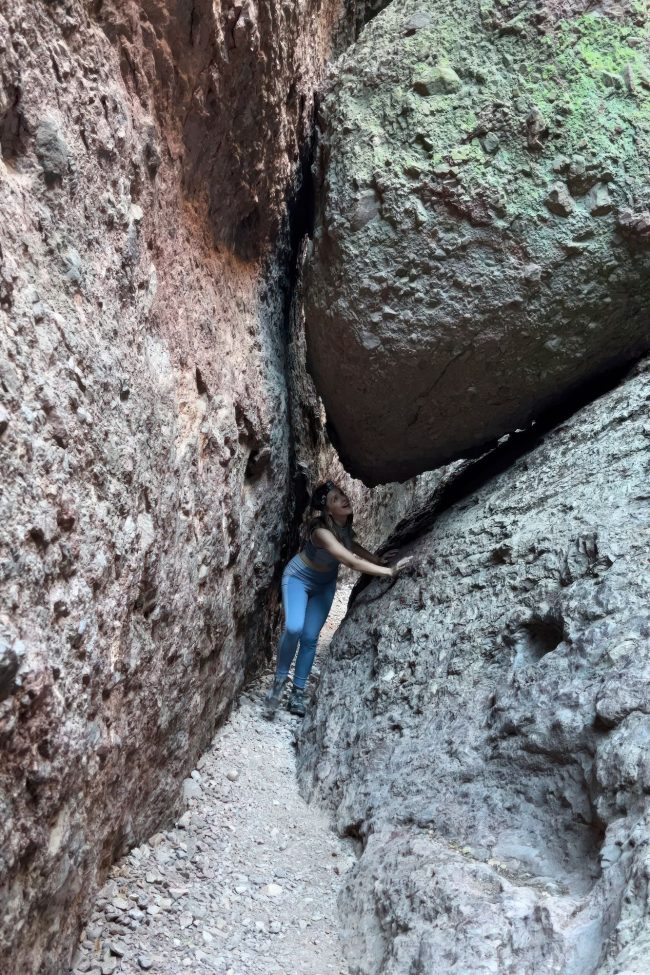The Best Trails for Hiking Pinnacles National Park
Last Updated on May 5, 2024
The Pinnacles National Park is the youngest and tiniest national park in the state, and it has everything a hiker could ever want. It’s also just two hours south of San Francisco, making it a great weekend trip. Today, I’m showing off these stunning views through a guide to hiking Pinnacles National Park!
The main highlights of the Pinnacles are the old volcanic peaks, caves, and local condors. The landscape here transformed from 23 million years of volcanic activity, growing boundless forests and echoing depths. Hiking is the best way to enjoy this park, but it’s also great for birdwatching and camping (more on that later!).
I went on a great journey hiking through the park’s best trails. Check out my reel for more sights!
Best Trails for Hiking Pinnacles National Park
The Pinnacles has two different entrances on the West and East side. If you’re going down through Highway 101, you’ll be on the West side. Mind that the West only opens from 7:30 AM to 8:00 PM! Taking Highway 25 and then turning into 146 leads to the East side which is open 24 hours.
The West side has Balconies Cave, the park’s most famous underground attraction. It also has fantastic trails up the peaks and rock formations for hikers seeking a challenge. On the other hand, the East side has the gorgeous Bear Gulch Reservoir and a diverse range of wildlife. Campers can also stay overnight in the East.
Both sides are well worth visiting for your trip, so I’ll talk about my favorite trails from each! Note that they are not connected, and you will need to drive around the park to visit the other area.
From the West
This trail is an easy to moderately challenging 2.6-mile hike into the Balconies Caves, only needing an hour and a half to complete. Here, you’ll pass through the lush Chaparral Trailhead to head towards the caves in the northeast path.
Balconies Cave Trail goes through dense forests and roads, then dives into the narrow talus caves between boulders. You’ll definitely want to bring a flashlight, a headlamp, and some waterproof clothes to get through them.

Balconies Cave
These passages below the Pinnacles landscape have holes all above the cave ceiling, letting light shine down in the dark. They’re a heavenly display that highlights the beauty of these caves.
The trickling waters, echoing creaks, and dim lights make this trail an all-around sensory wonderland for hiking Pinnacles National Park.
More suited to adventurous hikers, this 4.3-mile trail is a challenging trek up the peaks of West Pinnacles. It’ll take 2 to 3 hours to finish, circling around the High Peaks and getting good views of the Fingers and Hawkins Peak along the way.
You start from the same Chaparral Trailhead as the Balconies Cave Trail, but you’ll turn southeast at the fork instead. The spectacular views from above also make this trail a great place for birdwatching and geological observation.
There are also some other trails in the East that I’ll get into with similarly fantastic views! If you’re interested in exploring the heights of the West in a relatively short time, however, this is the best trail to head out through.
From the East
Note that most trails in the East start at the Bear Gulch Day Use Area. If you’re bringing family or friends along to Pinnacles, I highly recommend trying the campgrounds here! Outside of hiking, the area offers other facilities for picnicking, grilling, rock climbing, and nature watching.
For our guide hiking Pinnacles National Park, though, we’ll focus on my favorite trails from here.
Do glittering caves and crystal-clear waters excite you? If they do, you absolutely have to try the Moses Spring Trail. It’s an easy 1.2-mile hike down Bear Creek towards the Bear Gulch Reservoir. You can walk there from the day-use area, or drive and park your car around the Moses Spring Parking Area where the trail begins.
The trail road is clean and easily marked for hikers, and there are points where it dives down to the trail dives into several cave openings. Like in the Balconies Cave Trail, you’ll want to bring a headlamp and a flashlight through these caves, especially when it gets pitch black.
If you head in during the spring or after a heavy rain, you’ll even find some small, awe-inspiring waterfalls trickling down through the caves.
Bear Gulch Caves
Both the Balconies Trail and Bear Gulch Trail may close at times due to natural circumstances. Sometimes this may be due to weather conditions, but often it’s to allow the local bat colonies to reproduce and raise their kids! Be sure to check for the conditions of the cave on the national park website before hiking out.
The bats of Pinnacles are essential parts of the ecosystem, and the park takes great effort to keep them healthy. When entering both the Bear Gulch and Balconies Caves, be sure to bring extra sets of equipment and clothes along with cleaning material like soap. This helps avoid the spread of any diseases on the bat population–you can learn more about that here!
The final hike towards the Bear Gulch Reservoir is marked by a climb out of a cave opening with giant boulders trapped overhead. After riding up the carved steps, you’ll soon find the breathtaking reservoir reflecting Pinnacles’ highest peaks from afar.
Because of the location and quietness of the park, these waters have remained crystal clear and immaculate over time. It’s a fantastic place to rest and admire the massive stone giants all around the reservoir.

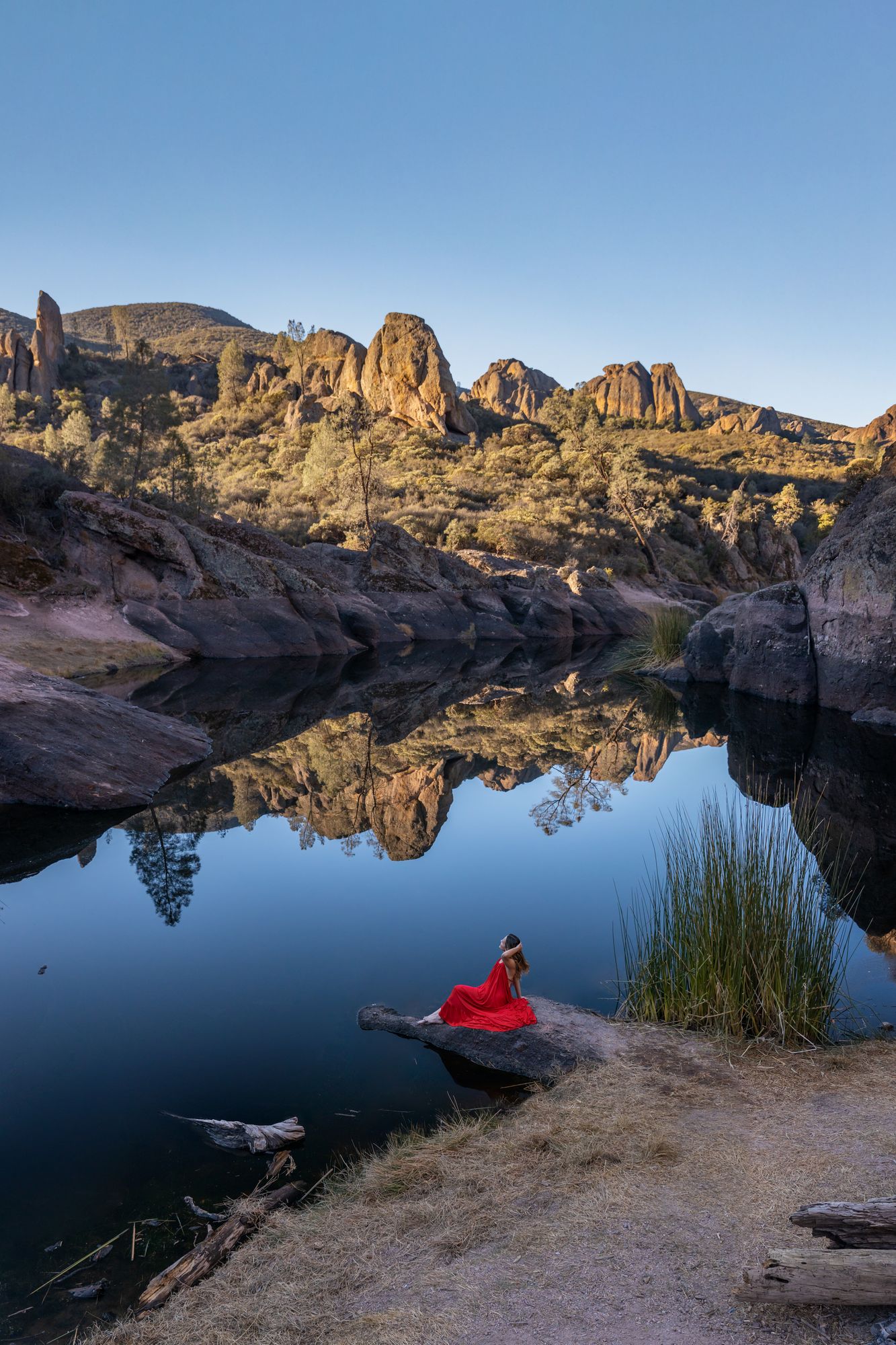
Bear Gulch Reservoir
This was by far my favorite route for hiking Pinnacles National Park! It’s a bit of a challenging hike up 5.5 miles of the looping peaks, and you get gorgeous views of the wilderness in exchange. This loop best showcases the unique High Peaks that made Pinnacles a national treasure in the first place.
What makes this route special to me is the sheer diversity of landmarks it has to offer. Loved the caves of the Moses Spring Trail? This trail dives into the same shimmering Bear Gulch Cave within the first mile. If you missed the Bear Gulch Reservoir, you can visit there shortly after on this same trail.
Missing the peaks and valleys of the Juniper Canyon Trail? You can find the same views and more on Scout Peak and the Condor Gulch Overlook. The rocky paths are carved well, with railings to climb even further up the steps.
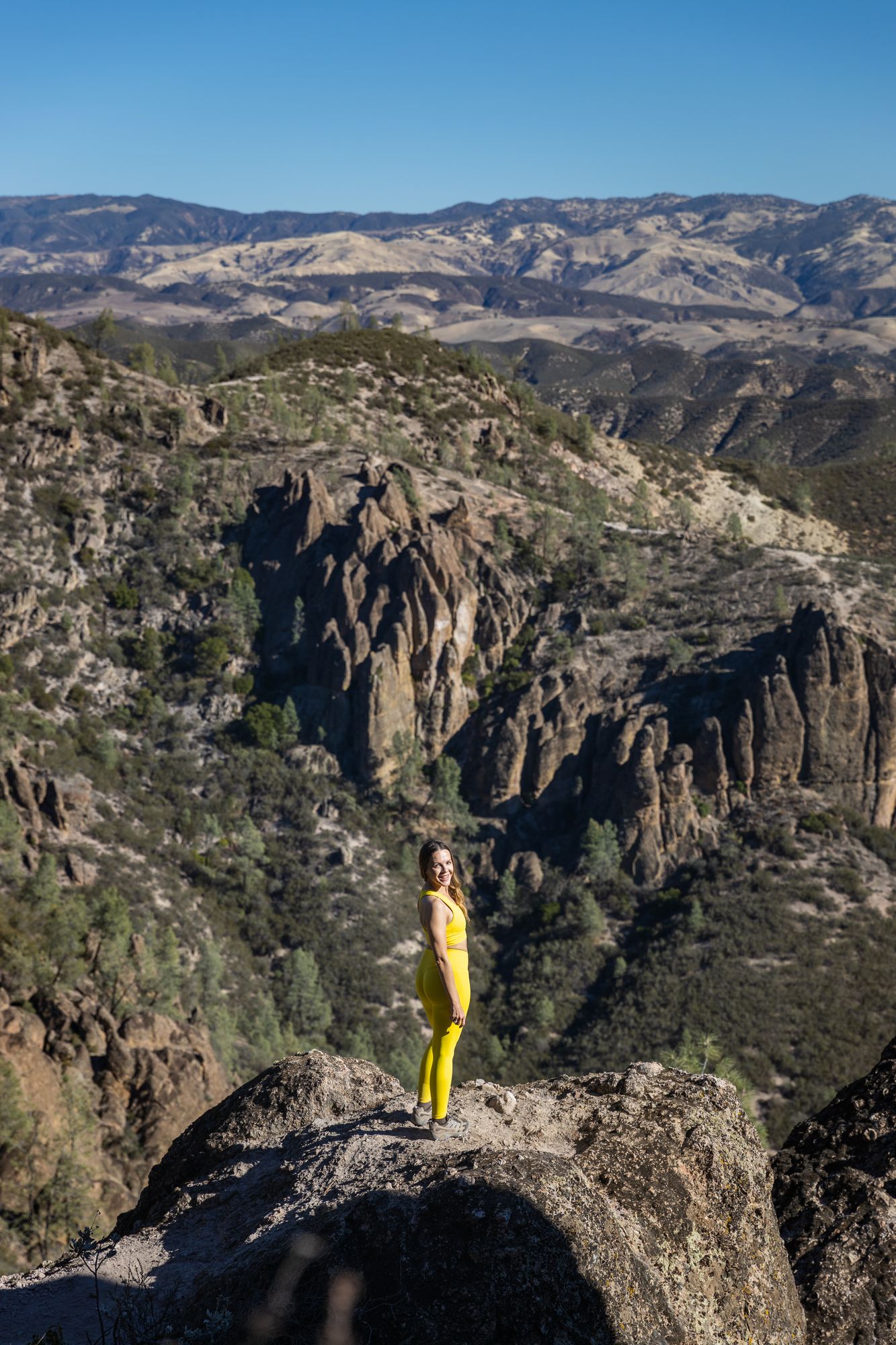
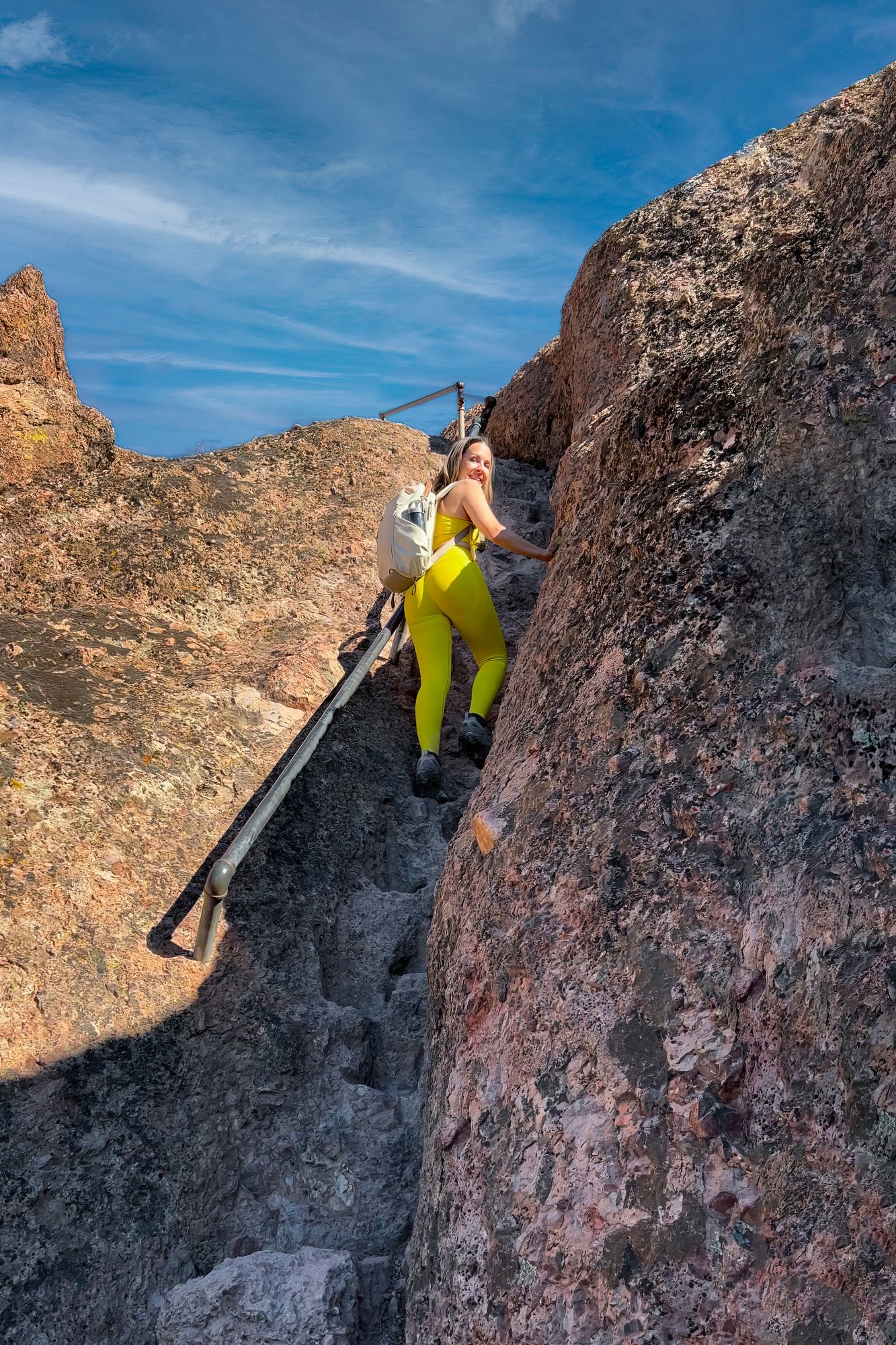
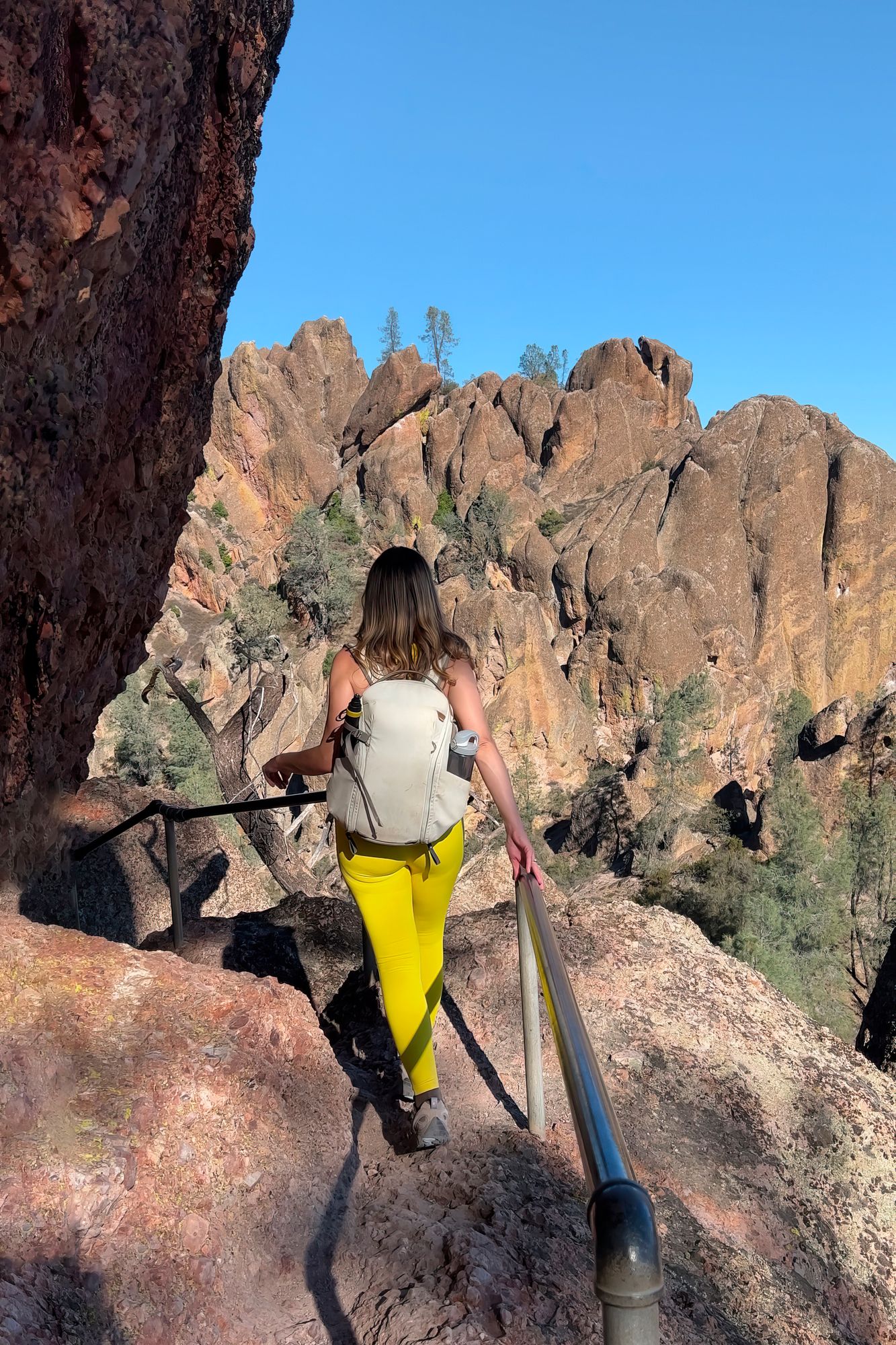
High Peaks Trail
Hiking high enough up, you may even find the famous condors that this trail is named after!
The most beloved part of this hiking journey, however, is the incredible panoramic view of the High Peaks. Far above, this is the most captivating place to take in all of Pinnacles National Parks’ beauty–and to shoot some great pictures.
For all these trails, remember to apply the 7 Principles of Leave No Trace. Let’s keep our state parks beautiful and serene for the future!
Things to Do While Hiking Pinnacles National Park
Depending on how long you have to explore, you’ll have a wide range of activities while hiking Pinnacles National Park. The handy rangers at the park have a variety of free programs for daring hikers, but I’ll also go over the most common things to do in the park.
You can find more inspiration for activities and challenges on the National Park website!
Watch for wildlife and plants
Despite the park’s small size, Pinnacles is home to a lot of animal species and flora unique to California. It’s a convenient place for bird-watchers heading down from San Francisco, and a treat for hikers finding these novel species in the wild.
You can find many biomes for different plants to grow in the wilderness here. The chaparral bushes are the most abundant, especially on trails in the East. However, there are also grasslands growing gorgeous wildflowers during the spring. Lichens and roots also curtain much of the unique rock formations in the park.
In terms of wildlife, the condors and raptors of the park are the major highlights. The Californian condors in particular are fantastic creatures with wingspans wider than the average man, spanning over 9.5 feet. Hunting decreased their numbers, but zoos in America have increased their numbers in captivity.
Now, bred condors are released in only 5 different places all over North America–and Pinnacles National Park is one of them!
If you want to find out more about what thrives in the wilderness of Pinnacles, you can find out more from the US Geological Survey report. In general, the area is a great place for nature lovers, and I adored observing the wildlife along the trails.
Try rock climbing
Pinnacles presents an interesting challenge for rock climbers due to its softer and smoother rock faces. There’s an active climbing scene around the park, and many of the popular climbing spots have bolts to anchor climbers onto the front.
The main climbing area is along Machete Ridge at the West end of the park. You’ll see this ridge while passing into the Balconies Caves, and it has several levels of difficulty for different climbers to try out. It’s a thrilling range to scale–if you’re interested, you can read a personal experience heading up there here.

Rock formations in Pinnacles
Keep in mind that the climbing routes might be closed due to raptor activity depending on when you arrive. Typically, raptors will start nesting and flying around here early in January and later until July. Be sure to check the raptor advisory before heading out!
Go camping with friends
I’ve already mentioned the Eastern Pinnacles camping ground, so I’m bringing it back here. The camping grounds here have a lot of great facilities and options for newer campers! There’s a site for RVs with electricity and fire pits, a space for showers, and a swimming pool through the summer.
You can make a reservation for camping grounds on the park’s recreation website, or call the national park’s number.
Best time to go (and what to prepare!)
While most national parks like Yosemite are busy in the spring and summer, Pinnacles peaks during fall and winter. I’d prefer to visit during the spring, so sometime between January to May. You’ll need to be careful about flooding, but the waters from spring make Pinnacle’s caves and flowery landscape all the more gorgeous.
Fall is also a fantastic time to enjoy the golden rays peering past the peaks. In other words, generally, you’d want to stick around early in the year or after September. The park’s hot summers can get quite overwhelming, so bring extra water and sunscreen protection if you visit by then.
Here’s a quick checklist of things you’ll have to prepare when hiking Pinnacles National Park:
Headlamps and flashlights for cave diving.
Clothing for heat: Breezy layers and a wide-brim hat or cap work best.
Soap and decontaminants to clean clothes and equipment between cave hikes.
Sunscreen and skin protection.
Waterproof layers: Rain boots or raincoats are fine.
A liter of water for each hour of hiking, per person!
Necessary fees and passes (you can find out where to get them here).
A spirit of adventure!

Rock formations in Pinnacles
As a whole, hiking Pinnacles was a fantastic way to spend a weekend. The short distances and stunning views creates an unforgettable journey for any hiker in California.
Looking for more unique parks to hike in the state? Read my hiking guide to Sequoia National Park.
Do you love exploring in California? I created an interactive map just for you! Check out my California Travel Map with over 500 pins of the best spots and hidden gems for California Travel!

